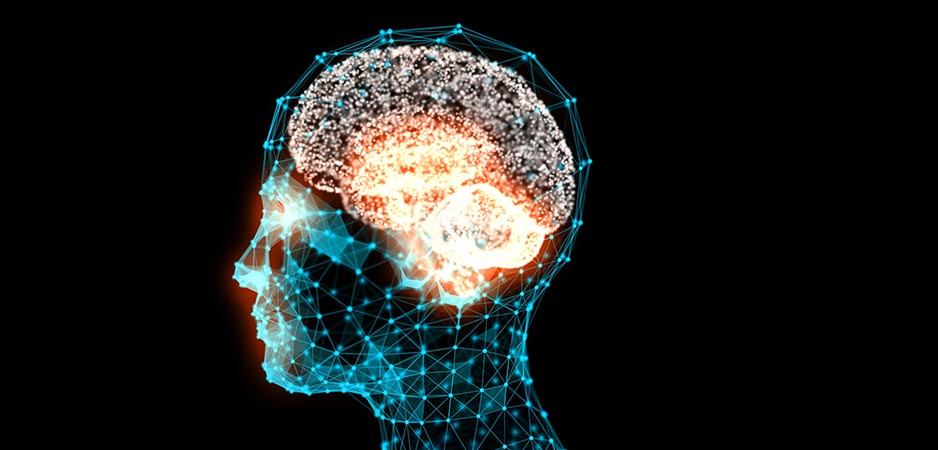By modern standards, our paleo ancestors had superpowers. They could run marathons barefoot on a starvation diet; sleep naked outdoors every night; go without water for long periods; endure bites, scratches and untreated wounds; and mind-meld with the same small group every day for life. With all their needs supplied by nature and no material objects to keep or carry, they lived in “flow” at the present moment as nature designed.
Some of us in Silicon Valley are trying to recreate those experiences. Here, the move-fast attitude that spawned digital hacking now also supports “biohacking,” the modification of bodily function through unusual chemical or thermal interventions. Applying scientific principles to improve one’s own life is now the rage of the CEO class. The techniques usually work, improving not just overall health but mental clarity.
Biohacking
Twitter CEO Jack Dorsey has popularized biohacking, even without claiming superpowers for himself. And history provides dramatic superhuman examples like Harry Houdini, whose famous underwater escapes involved simultaneous feats of cold tolerance, physical endurance, breath control, contortion and fearlessness. Today, the “iceman” Wim Hof can swim at the North Pole. Others can hold their breath for more than 10 minutes. It only takes a few examples like these to show that human superpowers are possible.
Contemporary biohacking falls neatly in two classes: deprivation and intervention. On the deprivation side are paleo diets, calorie restriction, intermittent fasting, “dopamine fasting” and cold tolerance. Intervention in those same metabolic systems might include dietary supplements, “micro-dosing” of hallucinogens or cryotherapy. As with diets, success requires weeks of consistent practice, so that feedback about what works comes slowly.
Buried in biohacking’s consistent success is a spectrum from safe to risky. On the safe side, each of the “deprivation” practices recreates part of the paleo environment, before tools or clothes, which biped bodies originally evolved for. If you think about the lifestyle of paleo people, their core competency was dealing daily with deprivation.
The innate discomfort of deprivation makes it unlikely to be addictive or to make much money. Because it works by sensorimotor recalibration, deprivation is safe from perverse economic incentives. On the other hand, the “intervention” practices, from supplements to drugs, have a different goal: to produce specific biochemical results or experiences, usually through commercially-supplied products. The appeal of this second path to both users and suppliers is obvious, as is its potential for abuse.
Biohacking vs. Neurohacking
Biohacking is what’s getting the buzz. But neuroscientific principles point to a more powerful way to hack the human nervous system: neurohacking.
By neurohacking, I mean hacking using the physical principles of neuromechanics in place of neurochemistry. That is, using the mathematical signal-processing laws connecting muscular vibrations to brain impulses during action and learning. It turns out you can use data-flow and physics ideas on their own to understand what might be called optimum biomechanics and hence optimum human function.
Those insights allow you to predict patterns of motor-neuron pulses that will improve balance and facilitate graceful and efficient running, internal heat generation, sensory sensitivity, interpersonal connection and so on. For example, optimal biomechanics enables hyper-athletes to perform simultaneous feats of strength, flexibility, coordination, grace, fluidity and expressiveness. For a shining example, look at Caltech physics graduate Renee Wu.
The pulse-timing principles of neuromechanics do not care what generated the pulses, so that — ironically — you can understand “neurohacking” without understanding neurons at all. That neuron-free approach is so untraditionally simple that many scientists have trouble with it, and research institutions do not yet fund it.
If biohacking is metabolic, then neurohacking is mechanical. Biohacking changes a body’s chemical or thermal environment over hours or days. By modifying muscle firings, neurohacking operates a billion times faster on microsecond neuromuscular phase. But be careful: High-speed interventions give high-speed feedback and improvement, but like other fast things, they can also spin out or explode.
The key principle from information science is this: The smaller the signals in space and time, the higher the bandwidth and information density they carry.
Physics tells us that brains operate with microseconds. However, we only consciously think and react in tenths of a second. This means that consciousness is 10,000 times lower and coarser than the deepest neuromechanical unconscious, where sensation is made. The fact that humans can operate in that ultrafast regime is both good and bad news. Biologically, high-bandwidth flow states are fun and healthy (albeit subtle), but their very speed and power, buried deeper than breathing or blinking, also puts them beneath the reach of conscious rules and memory.
Here’s my hypothesis: If the most effective digital “hack” of a computer would (by addressing the fastest and smallest bit-transitions and transistor-gates) enable execution of virtually any digital computation, then the most effective analog neurohack of a brain would (by addressing the most precisely-timed neural firings in the body) enable executing of virtually any muscular output from internal heat to eternal force, and thus enable experiencing virtually any sensation from calmness to ecstasy. The experience of maximum sensorimotor bandwidth is profound: time slows down, senses feel hyperacute and empathy upwells for others and even oneself.
White Hat vs. Black Hat
Once you start pushing any hardware to and past its design limits, you’re hacking. In the world of hacking, “black-hat” actors seek individual short-term profit and power, while “white hats” seek pro-social fairness and the long-term stability of the ecosystem. The distinction between white hat and black hat applies to biohacking too.
Whether biohacking or neurohacking, the science of testing white hat vs. black hat techniques could not be more different. Black-hat hacking, as it explores the most easily-scaled ways to gather money and power, inevitably leans toward the greatest impact on the greatest number, so it looks at populations and averages.
On the other hand, science seeking the uppermost human capacities has no use for averages, especially averages over sedentary, coddled populations. The scientific pursuit of extremes needs only sensitive, coordinated, powerful individuals, the near-superhuman outliers like Hof, Wu and Houdini. Outliers prove what’s possible as opposed to what’s normal.
Neurohacking faces the same white hat vs. black hat challenge, but even more so. First, because neurohacking operates below conscious awareness, you don’t know how it affects you until after the fact. More crucially, some neurohacking operates below conscious reaction times, so you respond instinctively before choice is even possible. While one might summon a few seconds of willpower between wanting a cigarette and lighting it, your eyes and attention move far faster, alighting on a sudden surprise the moment it enters your brain, before willpower is even possible.
Because neurohacking can be yet more scalable, monetizable and habit-forming than biohacking and less easily resisted, its black hat version is even more dangerous, especially in the hands of organizations. Think of the damage done by the Opium Wars, big tobacco and the sugar industry. The evidence is everywhere that two common sensorimotor manipulations — persuasive technology and “screen addiction” — already damage human health worldwide. To keep us safe from even deeper threats, neurohacking must stay in purely human hands, unmonetized, unsupervised and unregulated. (More on that at the end.)
But even white-hat biohacking still carries dangers. In recent decades, people have died from nutritional failures, supplement overdoses and cryotherapy. Over the centuries, people have suffered psychic breaks from yoga and meditation.
Principles of Neurohacking
So, consider yourself warned. I am not a medical doctor, I am a theoretical physicist. And I am not providing medical advice. What I am saying is you can hack a brain when you know how it works.
At the core, all brains control body vibrations, ranging from sub-bass body tremor to ultrasonic micro-tremor, that is from seconds down to microseconds. A brain controls vibrations the way a supercollider controls particles: by cleaning, coordinating and collimating wavefronts passing through myofascial conduits until the ultrasonic micro-tremors ring like coherent laser light. That ultra-pure mechanical resonance serves as a carrier wav of sorts for physical sensation and control. It emanates from the midline spine and from there entrains vibrations in the limbs and periphery. It runs the body from the spinal cord outward.
The brain’s self-tuning and self-calibration abilities, like all tuning and calibration, are amplified by clean, focused data from novel configurations. Data sources well-known as therapeutic include pleasant activities like stretching, exerting, massage, tugging, pushing and caressing. More powerful but less well-known data sources include weird and uncomfortable practices, such as touching a heavy, sharp axe-head against already-painful trigger-points on the skull or bone, thereby inducing a kind of reversible migraine sensation. (In this practice of ultra-grounding, the object’s heaviness provides the brain with a solid, steady “grounding” reference signal across frequencies into the ultrasonic, data that help realign the brain’s body map to produce joint-opening sensations of “release.”)
The neurohacking explanation for tolerable discomfort and its beneficial results is simple: Discomfort is data you need but don’t want. Or as some biohackers say, “no pain, no gain.” The neurohacking explanation for intense pleasure is similar: Pleasure rewards progress toward an unlikely state, such as a fully-straight spine or fully-inflated lungs.
In addition to deliberate discomfort, neurohacking relies on positive attitude. Reconfiguring one’s nervous system requires “letting go” of the old configuration. It relies on faith, trust, intimate connection, uncertainty tolerance and the acceptance of discomfort. Having an accepting, even willfully optimistic approach is essential to make neurohacking work. (Imagine the opposite: If your conscious mind believed superpowers were impossible, your unconscious mind would follow suit, making failure a self-fulfilling prophecy. So if you believe neurohacking won’t work, then it won’t… for you.)
Individual Neurohacking
There are countless neurohacking techniques for individuals. An off-the-cuff list based on my biophysics research (on ArXiv.org) includes these potential superpowers: cave echo-orientation, microsecond sound localization, sound healing, spinal ecstasy, thought-reading, contortion, endurance, hyperbalance, microtremor control, breath control, neuromechanical states of grace, auto-hallucination, reversing arthritis, reducing synthetic autism and Moebius motivation. (While there is no space to discuss those here, I would be happy to fill in details, or host a discussion, if Fair Observer readers show sufficient enthusiasm.)
I have used these techniques myself for years and have seen firsthand how well they work on others. But so have many professions and groups; for example, chiropractors and pole dancers.
Chiropractic healing is safer than drugs or surgery. The neuromechanical benefits can be truly life-changing (for me at least), only hobbled by mumbo-jumbo explanations regarding “pinched nerves.” In fact, the chiropractor practice of mechanically adjusting and realigning the spine de-wrinkles and de-kinks the brain’s data map, its virtual look-up table connecting neurons to muscles. That means that the pops and clicks you feel in joints are not just “bubbles in synovial fluid,” but specifically result from instantaneous transitions in the data map. Good chiropractors understand not only how to realign spines — compression, tension, torsion, myofascial pressure, thermal cycling — but understand the neuromuscular releases and the metabolic/hormonal/emotional relief that realignment brings.
My favorite hyper-athletes — pole dancers — are the nicest people ever. Their studios and stages are among the only happy places in the otherwise miserable Silicon Valley. Because humans evolved as a social, tree-climbing species, and a pole acts like an ideal hand-sized branch, a pole studio is a perfect paleo playground. Pole dancers gather in skimpy clothes to twist, pry and dangle their bodies from every joint in every position, incorporating every combination of angle, exertion, strength and pain imaginable. They yelp, gasp, show off and cheer each other on. All that social tugging and twisting improves their spines and lives. If you don’t believe it, ask someone whose life was changed by a pole.
After chiropractic touch and pole practice, the simplest neurohacking technique is whole-body ultra-grounding. This resets the brain’s motor map by pressing heavy fixed points against multiple bony prominences at once, and perhaps even connecting the points by lightweight (e.g., carbon fiber) conduits. One possible result is symmetric spinal health syndrome, reversing aches and stiffness even in the arthritic spine of a middle-aged man like myself.
Pro-Social Neurohacking
Paleo humans lived in hyper-functional teams, not as rugged individualists. Homo sapiens are the most intricately social animals on the planet. Our nervous systems evolved to cooperate and collaborate full-time and to reassure and heal each other through touch. Intimate, continuous, subconscious sociability is our greatest native superpower.
As self-vibrating objects, human bodies resonate like wine glasses if you let them. So as a general principle, the most universal neuromechanical “cure” for many mind/body problems is close proximity to caring people. If encouraging humans hear and touch you, then you’ll feel better.
Neurohacking Teasers
Here is a teasing introduction to some more specific pro-social neurohacking practices.
1: Pre-conscious resonance: Spiritual people sometimes sense a delicious silence in prayer, or in sacred spaces such as temples, mosques, churches or especially Auroville’s Matrimandir. That connection is built from accumulated micro-motions and micro-sounds.
Here’s how small groups can feel that effect: Arrange yourselves symmetrically and comfortably in a peaceful, quiet, distraction-free space, touching skulls as two partners might when lying side-by-side in bed. (Skull-to-skull is the highest-bandwidth neuromechanical connection.) Once so arranged, then rest, doing and saying nothing, just breathing, for at least 15 minutes. If both (all) of you intend to create and appreciate the silent resonant connection, then you will.
2: Physic healing: If “psychic healing” is hands-off, then “physic healing” is hands-on. For millions of years, our species and their ancestors used hands-on touch to make companions feel better. The trick is for two people to collaborate on focused discomfort, as with trigger-point therapy, in the service of realigning the receiver’s motor map. With a common intention to heal, both parties focus on the sore spot — with the healer pressing in deliberately and attentively with a fingertip or even a semi-sharp object like a stone, a spoon-handle or a healing crystal, and the receiver mentally pressing out at the same spot. After five or 10 minutes, upon release the receiver is likely to feel calmer, with more relaxed muscles.
3: Self-scaling meta-collaboration: If people enjoy something enough, they will share it. Then the recipients will share it and it will self-scale, spreading exponentially all by itself. (Marketers know this trick, unfortunately.) In a neutral environment, coherence among humans self-replicates as inevitably as crystallization, auto-catalysis or resonant convergence, so that human biorhythms synchronize as naturally as pendulum clocks on a table. If the people also enjoy fostering collaboration, their enthusiasm will catalyze yet more collaboration (i.e., collaboration about collaboration, or meta-collaboration). In the right hands, that could change the world.
For example, the acting-inspired method called “improv,” which practices uncertainty-tolerance and collaboration by default, has already jumped from the stage into offices and boardrooms. When operating in close proximity, especially with reciprocal touch, such real-time collaboration techniques hone interpersonal sensitivity and trust. Pairs and groups become hyper-collaborators, interacting as smoothly as the best military, athletic or dance teams, while also knowing exactly how and why it works so well.
Neuromechanical coupling techniques can underlie theoretically-optimal discussion and negotiation formats. Furthermore, they often induce experiences that answer questions such as: How can I resonate? How does my mind work? Can human skin feel delicious? Can group vibrations unite us?
4: Self-scaling chronic pleasure: If people can have chronic pain, they can have chronic pleasure. Back in paleo times, chronic pleasure was likely as normal as purring in cats. Even today, spiritual and yogic types experience it. The trick is to resonantly co-activate the same pleasure centers in two or more people. For example, if two people both enjoy relaxing and stretching the muscles of the head, then the skull-touching technique above could provide a simultaneous spinal ecstasy which regular practice might make as effortless as singing. Ask a yoga expert how it works, and why they want to share it with you. If you taste it, you may want to share it too.
Superpowers and Super-Responsibilities
Because these techniques are built in our biology, they have been discovered and rediscovered over millennia throughout the world. But as a general rule, the most potent of them (which are also the cheapest and easiest) undermine established power structures, so that over time the public-facing versions become de-fanged, misinterpreted and diluted. Meanwhile, the purest versions stay secret.
Biophysics and information theory point to easy-to-use versions and render them in the easy-to-discuss language of technology. That language, though, brings a clear warning: you can’t cheat mother nature. Just like there is no free energy, there is also no free resonance. Elementary principles of data topology impose an ironclad law of symmetry: Techniques that rely on the symmetric resonance of human beings will underperform at best, and cause long-term damage at worst if invoked or incentivized to break that symmetry.
Neuromechanically, all humans are created equal, even invisible users and enemies. Introducing inequality or exploitation into resonance will damage the participants and come to haunt whoever started it.
So stay safe, and enjoy your fellow creatures and yourself.
*[The articles in this column present a set of permanent scientific truths that interlock like jigsaw pieces. They span physics, technology, economics, media, neuroscience, bodies, brains and minds, as quantified by the mathematics of information flow through space and time. Together, they promote the neurosafe agenda: That human interactions with technology do not harm either the nervous system’s function, nor its interests, as measured by neuromechanical trust.]
The views expressed in this article are the author’s own and do not necessarily reflect Fair Observer’s editorial policy.
Support Fair Observer
We rely on your support for our independence, diversity and quality.
For more than 10 years, Fair Observer has been free, fair and independent. No billionaire owns us, no advertisers control us. We are a reader-supported nonprofit. Unlike many other publications, we keep our content free for readers regardless of where they live or whether they can afford to pay. We have no paywalls and no ads.
In the post-truth era of fake news, echo chambers and filter bubbles, we publish a plurality of perspectives from around the world. Anyone can publish with us, but everyone goes through a rigorous editorial process. So, you get fact-checked, well-reasoned content instead of noise.
We publish 2,500+ voices from 90+ countries. We also conduct education and training programs
on subjects ranging from digital media and journalism to writing and critical thinking. This
doesn’t come cheap. Servers, editors, trainers and web developers cost
money.
Please consider supporting us on a regular basis as a recurring donor or a
sustaining member.
Will you support FO’s journalism?
We rely on your support for our independence, diversity and quality.






